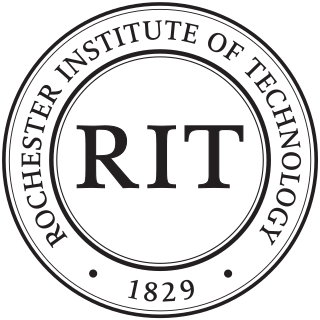
The Rochester Institute of Technology (RIT) is a private research university in Rochester, New York. It was founded in 1829.
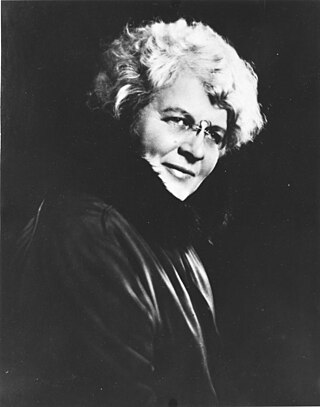
Catherine Anselm Gleason was an American engineer and businesswoman known for her accomplishments in the field of engineering and for her philanthropy. Starting at a young age, she managed several roles in the family-owned Gleason Works in Rochester, New York, and later used her experience to launch a successful career in finance and construction. Through a combination of formal education and work experience with the Gleason Works, she earned recognition as an engineer and was elected to the American Society of Mechanical Engineers in 1914 as their first woman member. Gleason is the namesake of the Kate Gleason College of Engineering at the Rochester Institute of Technology.
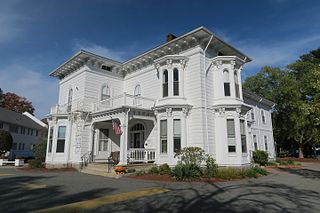
The Learning Center for the Deaf (TLC) is a Framingham, Massachusetts-based non-profit organization and school serving deaf and hard-of-hearing children and adults. The mission of The Learning Center for the Deaf is to ensure that all deaf and hard of hearing children and adults thrive by having the knowledge, opportunity and power to design the future of their choice.
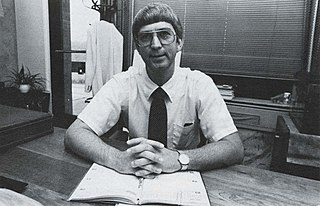
Thomas Robert Plough is an American sociologist most notable for having served as president of North Dakota State University and Assumption College.
The Postsecondary Education Network International, known as PEN-International, is an international partnership of colleges and universities serving the higher education of students with hearing impairment.

T. Alan Hurwitz is an American educator who served as the tenth President of Gallaudet University from 2010 to 2015. He is the first person born deaf, and first Jew, to hold this position. Previously, he served as President of the National Technical Institute for the Deaf and Vice President and Dean of Rochester Institute of Technology. He served in a variety of other roles for most of NTID's 40-year history.

James Francis Barker was the second president of the Rochester Athenæum and Mechanics Institute, succeeding Carleton B. Gibson, from 1916–1919.

Carleton Bartlett Gibson was a 19th– and 20th-century American industrial educator and university president. He notably served as the third president of Jacksonville State Normal School from 1886 until 1892; followed by serving as the first president of the Rochester Athenæum and Mechanics Institute from 1910 until 1916.
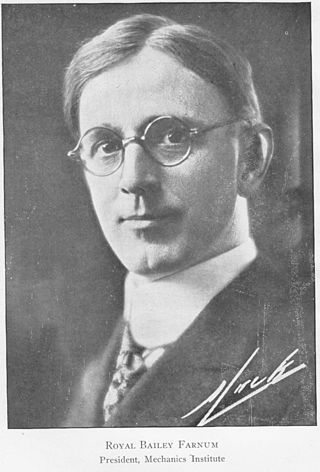
Royal Bailey Farnum was an American art educator who served in administrative roles in various public and private educational institutions in Massachusetts, New York, Ohio, and Rhode Island during the first half of the 20th century.

John Arthur Randall was the fourth President of the Rochester Institute of Technology, succeeding Royal B. Farnum, from 1922 to 1936.

Mark Ellingson was the 5th president of the Rochester Institute of Technology, succeeding John A. Randall, from 1936–1969. He rose from a teacher at the institute to the presidency, which he held for longer than anyone before or since, and in many ways he brought the institute into its modern form. During Ellingson's tenure in office from 1936 to 1969, enrollment in day and evening classes rose from 2,250 to 16,000. He also oversaw a major expansion of the RIT endowment; a 1937 merger with the Empire School of Printing; the 1944 renaming to "Rochester Institute of Technology" ; the planning, construction, and 1968 transfer to the current campus in Henrietta. He also spearheaded the drive to have RIT selected as the location for the National Technical Institute for the Deaf, which admitted its first students in 1968.

Paul Ausborn Miller was an American academic administrator who served as the 6th president of the Rochester Institute of Technology from 1969–1979. He oversaw the completion of the move of the campus to Henrietta and the steady growth of RIT between 1969 and 1981.

The Rochester metropolitan area, denoted the Rochester, NY Metropolitan Statistical Area by the United States Census Bureau, is a metropolitan statistical area consisting of six counties in Western New York, anchored by the city of Rochester, New York. Many counties are mainly rural with various farming communities scattered throughout the metropolitan area. As of the 2020 census, the MSA had a population of 1,090,135. The Rochester MSA is the 3rd largest MSA in New York state.
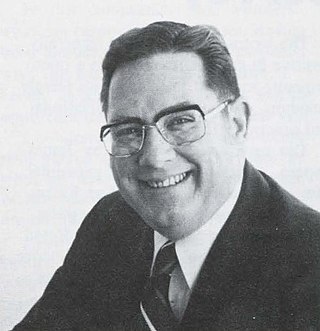
Todd Hupp Bullard was a 20th-century American educator, most notable for having served as president of Potomac State College and Bethany College, and provost of Rochester Institute of Technology.
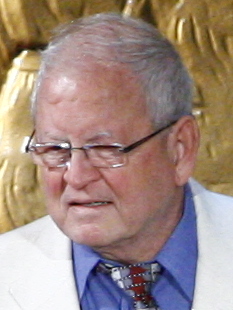
Paul Taylor was an American engineer, a pioneer in development of telecommunications devices for the deaf. He also enjoyed a kind of celebrity status because of his central role in the award-winning documentary Hear and Now. The film by daughter Irene Taylor Brodsky chronicles the before and after experiences of her parents, Paul and Sally Taylor, both of whom underwent cochlear implant surgeries in their mid-60s after a lifetime of deafness.
Hettie Beaman Lakin Shumway was an American philanthropist and humanist during the early and mid-twentieth century. She committed much of her time to volunteering and worked to change and improve the Rochester, New York area, particularly at the Strong Memorial Hospital, the East House Corporation, Lifeline, the Rochester School for the Deaf, among various other councils and committees. Shumway was also a strong advocate for establishing the National Technical Institute for the Deaf on the campus of the Rochester Institute of Technology.

Robert F. Panara was a poet, a professor and a co-founder of the National Technical Institute for the Deaf (NTID) and the National Theater of the Deaf. Panara is considered to be a pioneer in deaf culture studies in the United States.
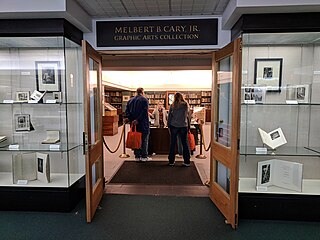
The Cary Graphic Arts Collection is a library and archive of books, type specimens, manuscripts, documents, and artifacts related to the history of graphical communication. Located in Wallace Library at the Rochester Institute of Technology (RIT), in Henrietta, New York, the Cary Collection contains literate artifacts as old as cuneiform tablets and as recent as computer tablets and e-books, in all comprising some 40,000 volumes in addition to manuscripts, correspondence, printing types and traditional letterpress printing equipment.
Santosh Kurinec is an IEEE fellow and a professor of Electrical & Microelectronic Engineering at Kate Gleason College of Engineering in Rochester Institute of Technology (RIT). She is an Indian American electronic engineer specializing in electronic materials and devices. She is a former IEEE Electron Devices Society distinguished lecturer. In 2018, she was inducted into the Women in Technology International (WITI) Hall of Fame.
The deaf/Deaf and hard-of-hearing (DHH) population are underrepresented in science, technology, engineering, and math fields (STEM), despite a history of excellence in these fields. The lack of standard American Sign Language (ASL) vocabulary, engaging hands-on learning environments, and DHH mentors seems to contribute largely to the discrepancy.
















